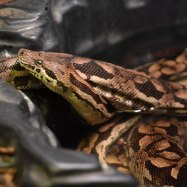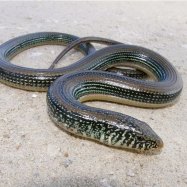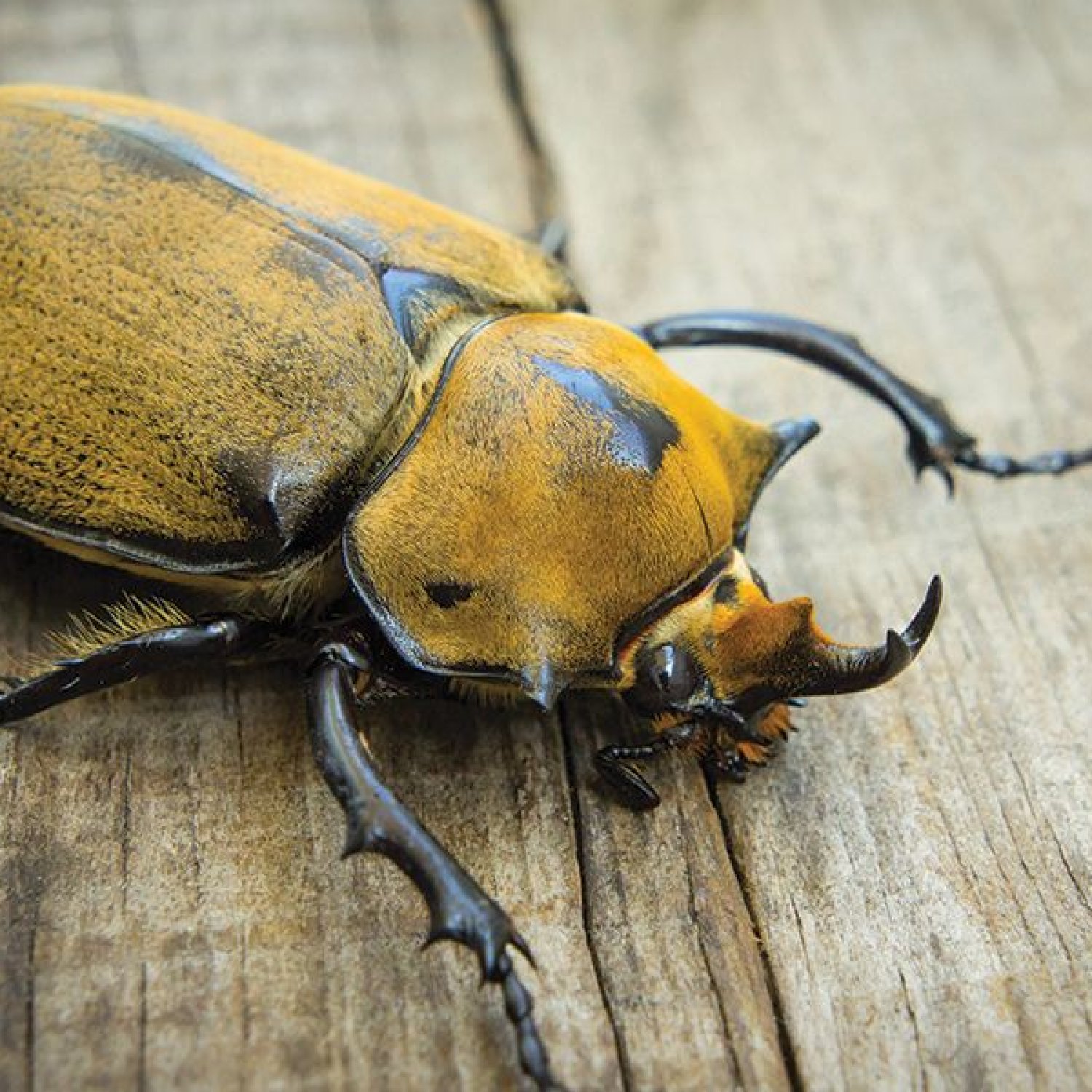
Elephant Beetle
Up to 15 centimeters (6 inches)
The Elephant Beetle, found in the Amazon rainforest, can grow up to 15 centimeters (6 inches) in length. With its large and elongated body shape, it belongs to the Scarabaeidae family. These beetles are known for their impressive strength, able to lift objects up to 850 times their own weight. Keep your eyes peeled for these majestic creatures on your next trip to the rainforest! #ElephantBeetle #AmazonRainforest #Scarabaeidae
Animal Details Summary:
Common Name: Elephant Beetle
Kingdom: Animalia
Habitat: Tropical rainforests
Elephant Beetles: The Giants of the Rainforest
In the heart of the famous Amazon rainforest, there exists a creature that is truly majestic and larger than life. Its presence can capture anyone's attention and leave them in awe. Known as the Elephant Beetle, this insect is one that can easily be mistaken for a creature from prehistoric times.The Elephant Beetle, scientifically known as Megasoma elephas, is a fascinating insect that belongs to the Animalia kingdom, Arthropoda phylum, and Coleoptera order Elephant Beetle. They are part of the Scarabaeidae family, which includes over 30,000 species of beetles. However, the Elephant Beetle stands out among them all with its impressive size and unique features.
These beetles thrive in the tropical rainforests of Central and South America, particularly in Brazil. The Amazon rainforest is one of their main habitats, which spans over 2.1 million square miles and is home to billions of diverse species of plants and animals. The Elephant Beetle has adapted well to this lush environment, making it an integral part of the ecosystem.
Being herbivorous, these beetles feed on a variety of plant matter, including fruits, leaves, and flowers. They use their large mandibles to consume their food, which is necessary to sustain their size and energy levels. Their feeding method also aids in the dispersal of seeds, making them essential for the growth and regeneration of the rainforest Eastern Turkey.
One of the fascinating things about the Elephant Beetle is its size and body shape. It is the largest species of beetle in the American continent, with a length of up to 15 centimeters or 6 inches. Its elongated body and large, curved horns closely resemble the trunk of an elephant, which is where it gets its common name from. This unique feature is also used for display and to attract potential mates.
Their coloration is mainly black or dark brown, which serves as camouflage in the dense rainforest environment. This helps them blend in with the dark and humid surroundings, making it challenging for predators to spot them. However, their size and strength are also crucial defense mechanisms against predators. They have a tough exoskeleton that protects them, and their mandibles can deliver a powerful bite if they feel threatened.
The Elephant Beetles have a very specific geographical distribution, being found only in Central and South America. This limited distribution, combined with the destruction of their habitat, makes them a rare and endangered species. As rainforests continue to face deforestation and their natural habitat diminishes, so does the population of Elephant Beetles.
To prevent further decline in their numbers, conservation efforts have been put in place. These include creating protected areas such as national parks and reserves, promoting sustainable land use practices, and raising awareness about the importance of these beetles in the ecosystem. With these efforts, it is hoped that the Elephant Beetle population will thrive and remain a unique part of the rainforest for generations to come.
Aside from their ecological significance, these beetles also have cultural significance among the indigenous communities of the rainforest. They are often seen as symbols of strength and fertility, and their mandibles are used in traditional crafts and jewelry. Their role in traditional beliefs and practices further emphasizes their importance and value to the people living in the rainforest.
Part of what makes the Elephant Beetle an intriguing and captivating insect is its place in science and research. Studying these insects can provide valuable insights into their evolutionary history and adaptations. Their large size and strength have also made them popular as subjects for biomimicry, with engineers and scientists looking to replicate their movements and structures in technology and robotics.
It is also worth noting that although the Elephant Beetle is not a domesticated animal, it has become somewhat of a pet in many countries. In Japan, for instance, these beetles are considered a popular exotic pet, with people keeping them in cages and feeding them specialized diets. While this practice may seem unusual to some, it highlights the global appeal and intrigue of these incredible insects.
In conclusion, the Elephant Beetle is truly a remarkable creature, unlike any other in the Amazon rainforest. Its large size, unique features, and ecological significance make it an essential part of the rainforest's ecosystem. As we continue to discover and learn more about these fascinating insects, it is crucial that we also work towards preserving their habitat and ensuring their survival. After all, it is through the preservation of diverse species like the Elephant Beetle that we can continue to appreciate and marvel at the wonders of nature.

Elephant Beetle
Animal Details Elephant Beetle - Scientific Name: Megasoma elephas
- Category: Animals E
- Scientific Name: Megasoma elephas
- Common Name: Elephant Beetle
- Kingdom: Animalia
- Phylum: Arthropoda
- Class: Insecta
- Order: Coleoptera
- Family: Scarabaeidae
- Habitat: Tropical rainforests
- Feeding Method: Herbivorous
- Geographical Distribution: Central and South America
- Country of Origin: Brazil
- Location: Amazon rainforest
- Animal Coloration: Black or dark brown
- Body Shape: Large and elongated
- Length: Up to 15 centimeters (6 inches)
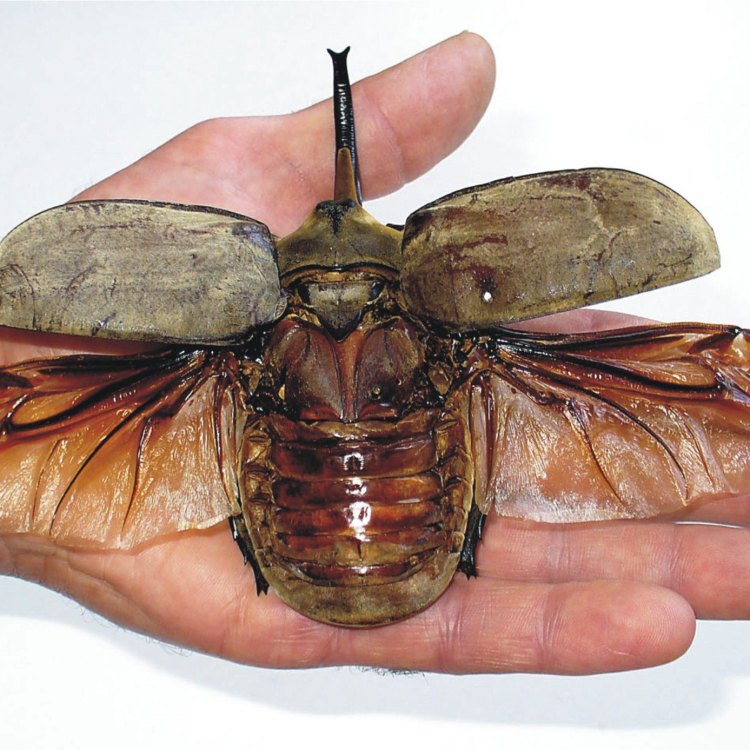
Elephant Beetle
- Adult Size: Large
- Average Lifespan: Several months to a year
- Reproduction: Sexual
- Reproductive Behavior: Mating and laying eggs
- Sound or Call: Not known to produce sound
- Migration Pattern: Non-migratory
- Social Groups: Solitary
- Behavior: Nocturnal
- Threats: Habitat loss, deforestation
- Conservation Status: Not evaluated
- Impact on Ecosystem: Role as decomposers
- Human Use: Collected for collections and display
- Distinctive Features: Large size, long and horn-like projections on males
- Interesting Facts: Males have enlarged mandibles resembling elephant tusks
- Predator: Various predators including birds and small mammals
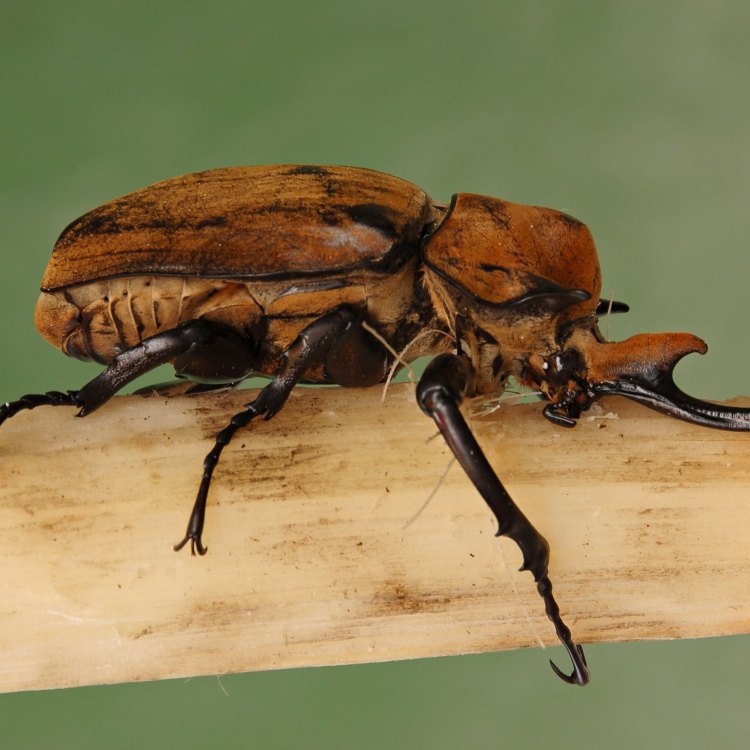
Megasoma elephas
The Mighty Elephant Beetle: A Fascinating Creature
The world is full of fascinating creatures that never fail to amaze us with their unique features and behaviors. One such creature is the Elephant Beetle. These massive beetles, known for their distinctive features and behavior, have captured the attention of many with their large size and impressive mandibles.In this article, we will dive into the world of the Elephant Beetle, learn about its characteristics, behavior, and role in the ecosystem PeaceOfAnimals.Com. We will also discover some interesting facts and the threats these magnificent creatures face.
An Impressive Size and Lifespan
As their name suggests, the Elephant Beetle is a large insect, with the average adult reaching a length of 60-80 millimeters (2.5-3.5 inches). They can weigh up to 70 grams and have a robust body, making them one of the heaviest beetles in the world.Despite their significant size, Elephant Beetles have a relatively short lifespan, typically living for several months to a year. However, in captivity, they can live for up to two years with proper care and nutrition.
Reproduction and Mating Behavior
The Elephant Beetle has a sexual mode of reproduction, meaning they require both male and female individuals to reproduce. Mating usually occurs during the rainy season when the males become more active in search of a mate Eurasian Sparrowhawk.The males have enlarged mandibles that resemble elephant tusks, which they use during mating rituals to compete with other males for a female's attention. Once a suitable mate is found, the male uses his mandibles to grasp onto the female's back and accompany her to a suitable egg-laying site.
Nocturnal Behavior and Solitary Lifestyle
One of the most intriguing aspects of the Elephant Beetle is its behavior. These insects are mostly solitary and are active at night, making them nocturnal. During the day, they hide in moist soil or under vegetation, only emerging at night to feed or find a mate.Due to their solitary behavior and nocturnal lifestyle, the social aspect of the Elephant Beetle is not well understood. However, it is believed that they do not form groups or colonies and prefer to live and hunt on their own.
No Sound, Non-Migratory, and Enigmatic Behavior
Unlike many insects, the Elephant Beetle is not known to produce any sound or call. This could be due to their large size, making it unnecessary for them to produce sound for communication or defense.These beetles are also non-migratory, meaning they do not undertake long-distance movements like other insects. They prefer to stay in their habitat and are not known to travel long distances unless forced to by certain factors.
The enigmatic behavior of the Elephant Beetle adds to its allure, making it a truly mysterious and captivating creature.
Impact on the Ecosystem: A Vital Role as Decomposers
As with most insects, the Elephant Beetle plays a vital role in the ecosystem as decomposers. They feed on decaying organic matter, such as rotting plants and tree stumps, helping to break down and recycle nutrients back into the soil.Without these decomposers, the ecosystem would suffer, and the soil would become less fertile, affecting the growth of plants and other organisms. Therefore, the presence of the Elephant Beetle in the ecosystem is crucial for maintaining the delicate balance of nature.
Human Use and Collection for Display
With their impressive size and unique features, it's no surprise that the Elephant Beetle has piqued the interest of humans. These insects are often collected by insect enthusiasts for collections and display purposes.However, this practice can have negative impacts on the species' population, especially when collected from their natural habitat. It is essential to ensure sustainable collection methods to protect the Elephant Beetle from overexploitation.
Threats and Conservation Status
The main threat to the Elephant Beetle comes from habitat loss and deforestation. As these insects rely on moist soil and decaying organic matter for survival, the destruction of their habitat can significantly impact their population.Unfortunately, the conservation status of the Elephant Beetle is currently not evaluated. However, measures must be taken to protect their habitat and ensure their survival in the wild.
Distinctive Features and Interesting Facts
Apart from their massive size, the Elephant Beetle has several distinctive features that make them stand out from other beetles. The most notable of these features are the long, horn-like projections on the males' heads.These projections, known as "cephalic horns," can grow up to one-third of the male's body length and are primarily used for mating and defense. They give the males a seemingly intimidating appearance, making them stand out among other beetles.
Moreover, the males' enlarged mandibles resemble the tusks of an elephant, adding to their unique appearance and earning them the name "Elephant Beetle."
Predators and Defense Mechanisms
Like all creatures, the Elephant Beetle has its fair share of predators. Various birds and small mammals often prey on these insects, making it crucial for them to have effective defense mechanisms.Apart from their enlarged mandibles, the Elephant Beetle can also produce a foul-smelling fluid from their thorax. This fluid acts as a deterrent for predators, making them less likely to attack.
Furthermore, if under threat, the Elephant Beetle can also play dead, curling up its legs and remaining motionless until the perceived danger has passed.
The Role of Elephant Beetles in Folklore and Culture
Across cultures, the Elephant Beetle has been a symbol of strength, power, and fertility due to its impressive size and unique features. In ancient Egypt, they were seen as a symbol of rebirth, often depicted in hieroglyphs and artifacts.In Native American folklore, the Elephant Beetle was revered for its strength and protection, with warriors wearing its horns as a symbol of courage in battle. In Hindu mythology, the Elephant Beetle is associated with the Hindu God, Indra, representing strength and bravery.
Conclusion
In conclusion, the Elephant Beetle is a fascinating creature that continues to captivate and intrigue us with its size, behavior, and unique features. From its role as decomposers in the ecosystem to its enigmatic behavior and cultural significance, these beetles have much to offer.However, it is crucial to protect their habitat and ensure sustainable collection practices to ensure their survival. Let us appreciate and admire these magnificent creatures from a distance and continue to learn more about them as we strive to protect their presence in the natural world.

Elephant Beetles: The Giants of the Rainforest
Disclaimer: The content provided is for informational purposes only. We cannot guarantee the accuracy of the information on this page 100%. All information provided here may change without prior notice.



